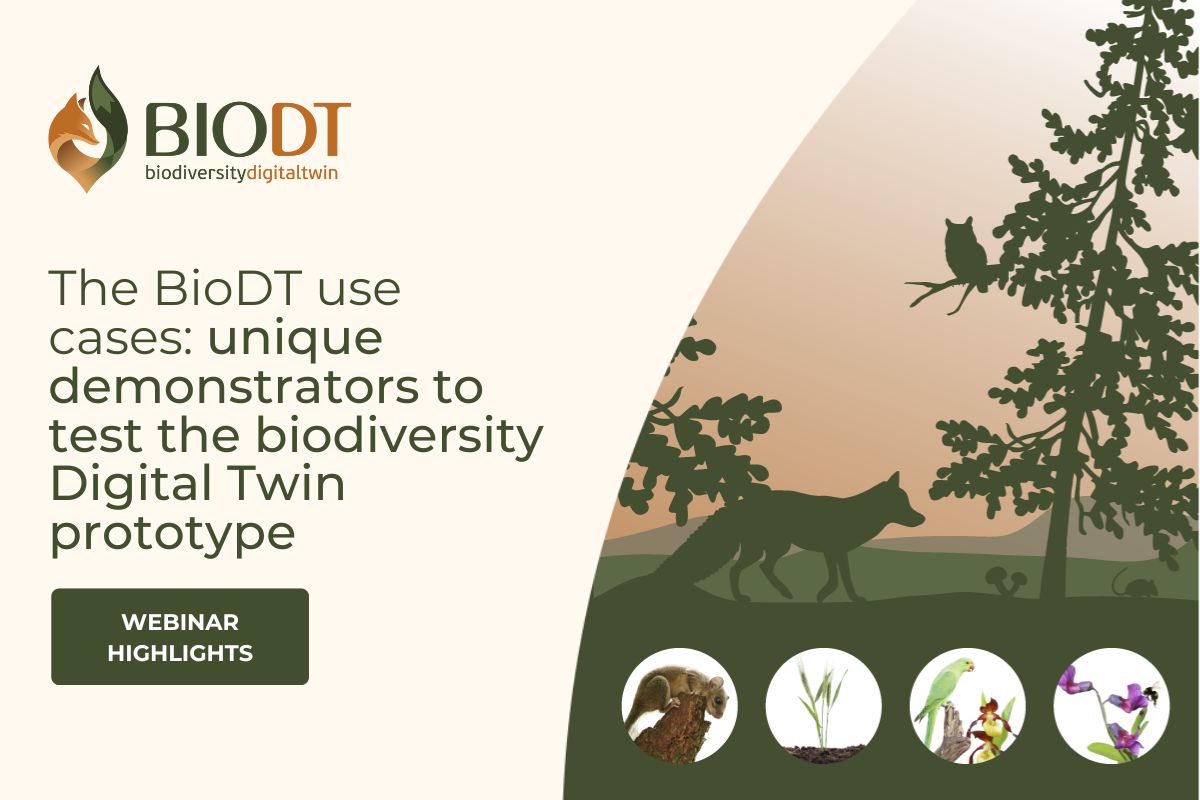
The BioDT project aims to develop the biodiversity digital twin prototype to help better predict global biodiversity dynamics and how species interact with their environment and with each other. In order to test the work developed by the BioDT team in the three years of the project, groups of use cases will showcase how BioDT can examine its predictive performance and address biodiversity challenges through scenario simulations, predictions and biomonitoring methods. In order to speed up with the development of the BioDT use cases, the project team has met from 5 to 7 September 2022 in Potsdam, Germany, for an internal technical workshop. The aim of the event was to:
- Consolidate the use cases leads and project teams;
- Develop the scientific questions for each use case;
- Start developing requirements for each use case;
- Identify data types and sources to be used;
- Prioritise UCs and exact scenarios to be addressed by initial development work;
- Define the process of data flow from Research Infrastructures (RIs) to modellers;
- Define data format and quality requirements between 1) RIs and 2) RIs and modellers
The workshop was organised by UFZ and welcomed 17 participants from BioDT partners. Following this workshop, and in order to present the use cases developments also to external partners, a free BioDT webinar was organised on 27 September 2022. The event showcased through presentations, interactive sessions with the audience and a Questions & Answers session the main achievements of the use cases and the next steps. During the 1-hour webinar, it was possible for attendees to learn more about the scope, challenges, solutions and benefits brought by the BioDT use cases and how their development can help scientists in predicting future trends in biodiversity. The webinar was organised by Trust-IT in cooperation with the use cases leaders.
The following sections present the main objectives and characteristics of the use cases and the main outcomes of the BioDT webinar.
The BioDT four use cases groups
The BioDT use cases are eight in total and are divided into four main groups, which are focused on:
-
Group 1 - Species response to environmental change: This group puts attention on biodiversity dynamics and ecosystems services;
-
Group 2 - Genetically detected biodiversity: This group aims to bring research forward for crop wild relatives and genetic resources for food security and DNA-detected biodiversity, poorly known habitats;
-
Group 3 - Dynamics and threats from and for species of policy concern: This group explores invasive species and endangered species;
-
Group 4 - Species interactions with each other and with humans: studies disease outbreaks and pollinators.
The topics investigated by each group are then tackled in more specific areas by the two use cases in each group. These use cases are designed to build on the biodiversity Research Infrastructures involved in BioDT (DiSSCo, eLTER, GBIF, LifeWatch) to develop the first prototype biodiversity digital twins. The objective is to demonstrate that these digital twins are fit for scientific research.
An overview of the scientific use cases for BioDT was presented by Dag Endresen, GBIF Node Manager for Norway and BioDT Use Cases Co-Leader, at the use cases webinar, where three of the eight use cases, covering three of the four case groups, were presented. In particular, the webinar presented:
- Genetically detected biodiversity, presented by Desalegn Chala Gelete, Post-doc researcher at Universitet i Oslo;
- Dynamics and threats from and for species of policy concern, explained by Ingolf Kühn, Professor at Helmholtz Centre for Environmental Research - UFZ;
- Species interactions with each other and with humans, introduced by Marcella Orwick Rydmark, Research Coordinator at Universitet i Oslo.
Interactive session with the audience
The BioDT use cases webinar attracted a total of 93 participants from 21 countries.
During the event, participants were asked a series of questions to understand their familiarity with the topics addressed by the use cases and the concept of digital twins. The following graphs show the main findings and takeaways from the surveys. The session has been moderated by Rita Giuffrida, Researcher at Trust-IT Services.
Following the interactive session, Dmitry Schigel, Scientific Officer at GBIF Secretariat and BioDT Use Cases Co-leader, moderated the Q&A one. The topics addressed during this session are summarised below:
- Future scenarios and topics observed by the Biodiversity Digital Twin;
- Interoperability rules to integrate the Digital Twin into the LUMI Supercomputer;
- Digital Twin and species distribution modelling;
- Data and semantic rules adopted to model the use cases;
- Benefits and future scenarios of the use cases;
- Possible collaborations with external institutions for the development of the use cases.